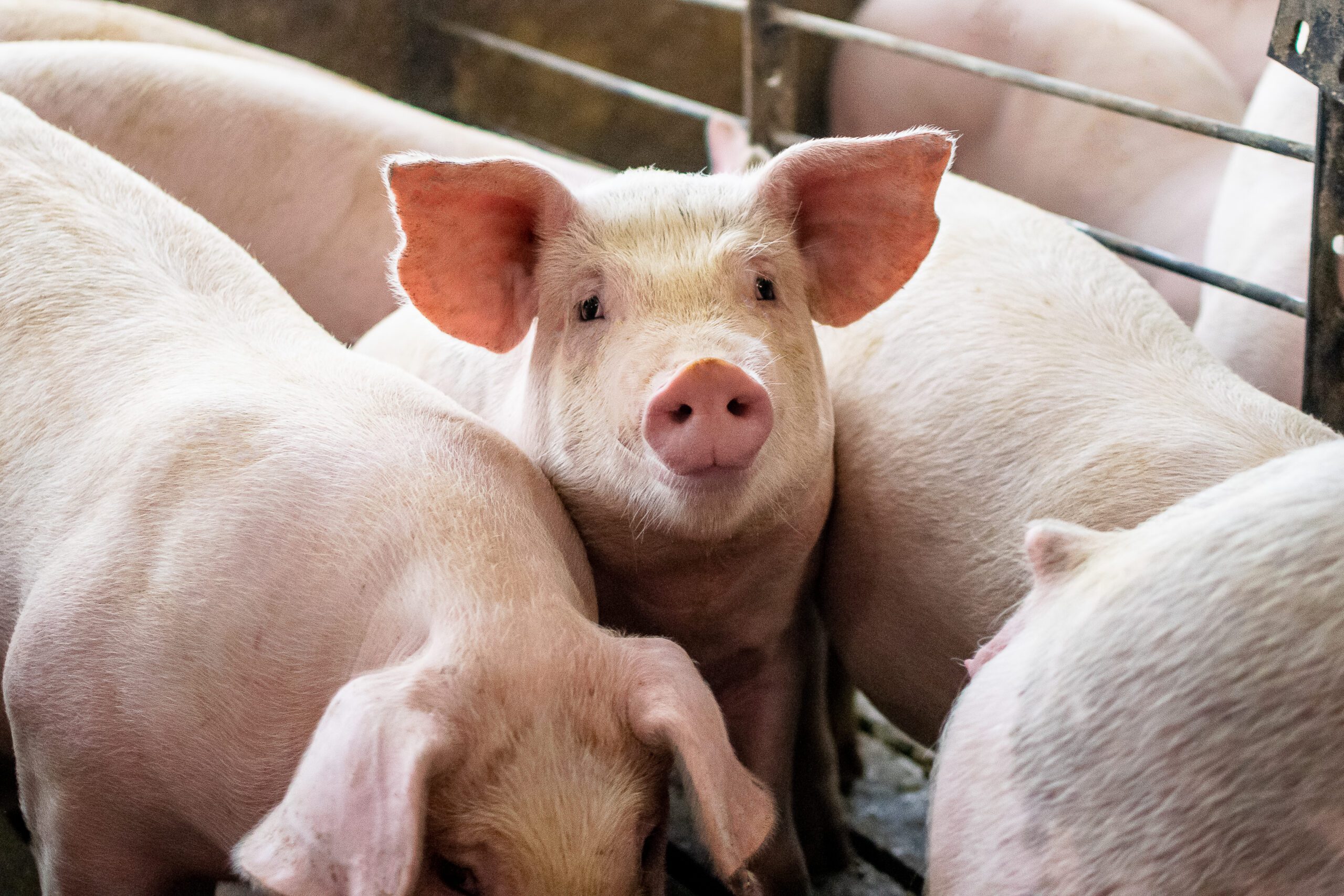Soybean meal (SBM) fiber composition is primarily galactooligosaccharides, galactomannans, and arabinogalactans, while soybean hulls (SH) contain more pectins, cellulose, and hemicellulose. These carbohydrates affect the physicochemical properties of SBM and SH in swine gastrointestinal tract. Implementing in vitro foregut digestion (IVD) hydration assays may yield a more realistic expression of dietary fiber’s physicochemical properties. This study aimed to compare conventional hydration assays with IVD methodology to enhance understanding of SBM and SH physicochemical behavior. A total of 75 samples each of SBM and SH, subsampled by plant location and provider, were assessed for bulk density (BD), water binding capacity (WBC), holding capacity (WHC), and swelling capacity (WSC) using conventional and IVD methodologies. For IVD, samples were incubated at optimal pH for gastric digestion using pepsin, and pancreatin to simulate small intestine conditions. Post IVD, physicochemical properties were assessed. T-tests were conducted to compare IVD and conventional methodologies. Pearson correlations were assessed to identify any associations among physicochemical properties. Stepwise multiple linear regression (MLR) modeled IVD physicochemical properties in SH based on nutrient analysis and conventional methodology. Relative to SH, SBM had greater BD (419 vs. 663 kg/m³; P < 0.01). In contrast, SH had greater WHC (6.6 vs. 4.6 ml/g), WBC (4.9 vs. 3.1 g/g), WSC (8.2 vs. 3.0 ml/g), WHC-IVD (6.0 vs. 4.6 ml/g), WBC-IVD (5.6 vs. 5.3 g/g), and WSC-IVD (4.6 vs. 3.0 ml/g) than SBM (P < 0.01). For SH, there is a strong negative correlation between WSC and BD (r= -0.90) and moderately positive correlations between WHC-IVD and WSC-IVD (r=0.74), WBC-IVD and WHC-IVD (r=0.66), WBC-IVD and WBC (r=0.62), and WBC-IVD and WHC (r= 0.58) were observed. Correlations among physicochemical properties in SBM were minimal (r < ±0.5). For SH, IVD methodology reduced WHC by 6.1% and WSC by 43.9% while increasing WBC by 14.3% (P < 0.001). In SBM, IVD methodology increased WBC by 76.7% (P < 0.001) but did not differ from conventional methods for WHC (P=0.25) or WSC (P=0.78). For SH, the MLR model for WHC-IVD explained 34.1% of the variance (R²=0.34; P < 0.001). Significant predictors included BD (B = 0.00115, P=0.033), WBC (B = 0.489, P < 0.001), and WHC (B = 0.242, P < 0.001). The MLR model explained 49.8% of the variance in WBC-IVD for SH (R² = 0.4981; P < 0.001), significant predictors include WBC (B = 0.552, P < 0.001), WSC (B = 0.0356, P=0.0143), and WHC (B = 0.148, P < 0.001). This study highlights that IVD methodology captures distinct WHC, WBC, and WSC in SH, with hydration behaviors less evident in SBM, suggesting SH’s unique fiber composition and concentration impact its physicochemical properties.
Hansen, S., J. Edwards, S. Lau, G. Lima, N. Vander Werff, D. Rosero and A. Petry. 2025. In vitro digestion and conventional hydration assays reveal differential physicochemical properties in soybean meal and hulls. 2025 American Society of Animal Science Midwest Section meeting, Abstract 225.
